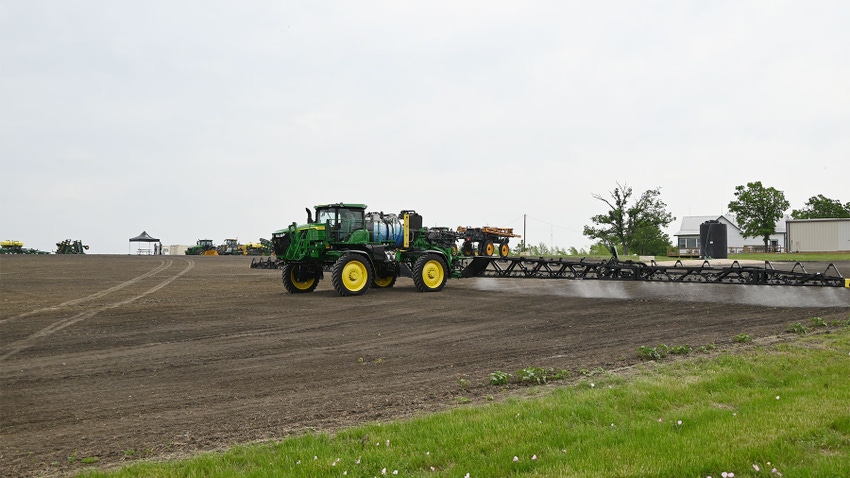January 25, 2024

Precise, efficient and cost-effective.
Spraying herbicides is seldom described using these words, but the development of advanced weed-spraying equipment is making this a reality. The ability to spot-spray herbicide where it’s needed has been mostly elusive, but precision weed management is making this possible.
“You may not get the dime-sized weeds, but you won’t raise the risk of resistance,” said Tom Wolf, senior researcher for Agrimetrix Research & Training in Saskatoon, Saskatchewan, Canada, at the recent Corn Congress put on by Cornell Extension.
Precision spraying can also save farmers money, as they will use far less spray. In his research, Wolf has found that the headlands are where farmers use the most spray, up to 50% of an entire field sometimes.
This is where precision weed control — such as weed-specific herbicide sprays, alternative control measures and species compositions — can have an outsized effect. It can reduce inputs anywhere from 40% to 90%.
“You can reinvest that in multiple modes of action to delay resistance,” Wolf said. “If you know where weeds are, you don’t have to spray them.”
The latest weed-spraying equipment, outfitted with digital RGB cameras, uses the “green-on-brown” method to spray and eliminate weeds before planting.
“It can detect size, shape and location” of the weed, Wolf said. “The algorithm can put all these things together to see what it looks like among hundreds of millions of parameters. The camera figures it out in 150 milliseconds, in time to spray the weed.”
John Deere has gone a step further with its See and Spray Premium, a green-on-green solution for in-season weed control in field crops.

SPRAY RESEARCHER: Tom Wolf, senior researcher for Agrimetrix Research & Training, presented at the 2024 Corn Congress in Henrietta, N.Y.
Croptimistic Technology, a company based in Saskatoon, uses cameras on sprayers to determine crop emergence and to initiate patch spraying in zones where it’s warranted. There’s one camera per boom wing, and its technology uses artificial intelligence to separate weeds from crops.
“We may need to make more than one pass if we leave behind 10% of weeds,” Wolf said. “If you eliminate 90% of weeds and do another pass and get 90% of those, there’s 1% left after two passes.”
The cost of a spray pass ranges from $5 to $10 an acre when considering depreciation, fuel, labor, repairs and insurance. Spot spraying can help lower operational costs, but it also requires investment in the equipment.
Companies such as BBLeap and Exxact Robotics from France; Greeneye from Israel; Precision AI from Canada; Taranis from Israel; and One Smart Spray/Bosch from Germany operate in this space.
“Optical spot sprays can reduce inputs,” Wolf said. “The savings can be put toward stewardship of pesticides. Alternate control is possible.”
Any system’s success relies on highly accurate weed recognition, which only improves as AI grows.
“Annotated data and processing power are barriers,” Wolf said. “There are many potential uses of machine learning in ag outside of spot sprays.”
One of those he mentioned was the ability to recognize overwintered, unharvested almonds that tend to attract pests. Anna Haldewang of Syracuse, Ind., invented Insighttrac, a piece of equipment that spots dud almonds on the tree and shoots them off with a robotic peashooter that fires biodegradable pellets without damaging the almond tree.
Wolf noted that drones have made inroads in automating spraying tasks. “We need to get a handle on drift,” he said. “Does it happen more than on manned aircraft? This could be a can of worms.”
Sergeant writes from central New York.
Read more about:
SprayingAbout the Author(s)
You May Also Like




